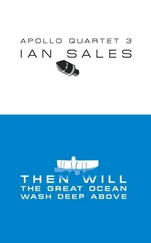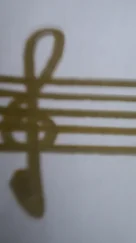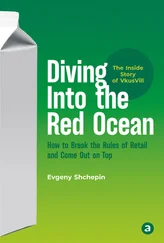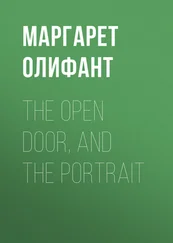Joseph J. Torres - Life in the Open Ocean
Здесь есть возможность читать онлайн «Joseph J. Torres - Life in the Open Ocean» — ознакомительный отрывок электронной книги совершенно бесплатно, а после прочтения отрывка купить полную версию. В некоторых случаях можно слушать аудио, скачать через торрент в формате fb2 и присутствует краткое содержание. Жанр: unrecognised, на английском языке. Описание произведения, (предисловие) а так же отзывы посетителей доступны на портале библиотеки ЛибКат.
- Название:Life in the Open Ocean
- Автор:
- Жанр:
- Год:неизвестен
- ISBN:нет данных
- Рейтинг книги:5 / 5. Голосов: 1
-
Избранное:Добавить в избранное
- Отзывы:
-
Ваша оценка:
- 100
- 1
- 2
- 3
- 4
- 5
Life in the Open Ocean: краткое содержание, описание и аннотация
Предлагаем к чтению аннотацию, описание, краткое содержание или предисловие (зависит от того, что написал сам автор книги «Life in the Open Ocean»). Если вы не нашли необходимую информацию о книге — напишите в комментариях, мы постараемся отыскать её.
Life in the Open Ocean: The Biology of Pelagic Species
Life in the Open Ocean: The Biology of Pelagic Species
Life in the Open Ocean — читать онлайн ознакомительный отрывок
Ниже представлен текст книги, разбитый по страницам. Система сохранения места последней прочитанной страницы, позволяет с удобством читать онлайн бесплатно книгу «Life in the Open Ocean», без необходимости каждый раз заново искать на чём Вы остановились. Поставьте закладку, и сможете в любой момент перейти на страницу, на которой закончили чтение.
Интервал:
Закладка:
Encounter Zone
Madin (1988) used field observations, videography, and measurements to produce a very useful conceptual model of feeding behavior in medusae, ctenophores, and siphonophores. In his model, the shape of the medusa’s bell, its arrangement of tentacles, and its swimming behavior create an encounter zone where probability of prey capture is maximized. Within the encounter zone, the likelihood that various prey types will be caught depends on the interaction of tentacle density, tentacle spacing, prey size, type, and the behavior and properties of nematocysts ( Table 3.1).
Figure 3.17illustrates modes of tentacle deployment for a variety of different medusae and siphonophores. Most of the medusae illustrated are hydromedusae, underscoring the diversity in their morphology. “Type” species represented in Figure 3.17are listed in Table 3.1and described briefly below.
Anthomedusae
Calycopsis typa ( Figure 3.17a) has a globular bell and thick tentacles held out radially when fishing, creating a discoid volume about three times the diameter of the bell.
Stomotoca pterophylla ( Figure 3.17b) is a species with two tentacles that may be 50 times the bell diameter when fully extended. The tentacles occupy only a tiny fraction of the spherical volume accessible to them. Prey must swim into the tentacles for successful capture. Stomotoca feeds on medusae that are large enough to allow its feeding apparatus to function effectively.
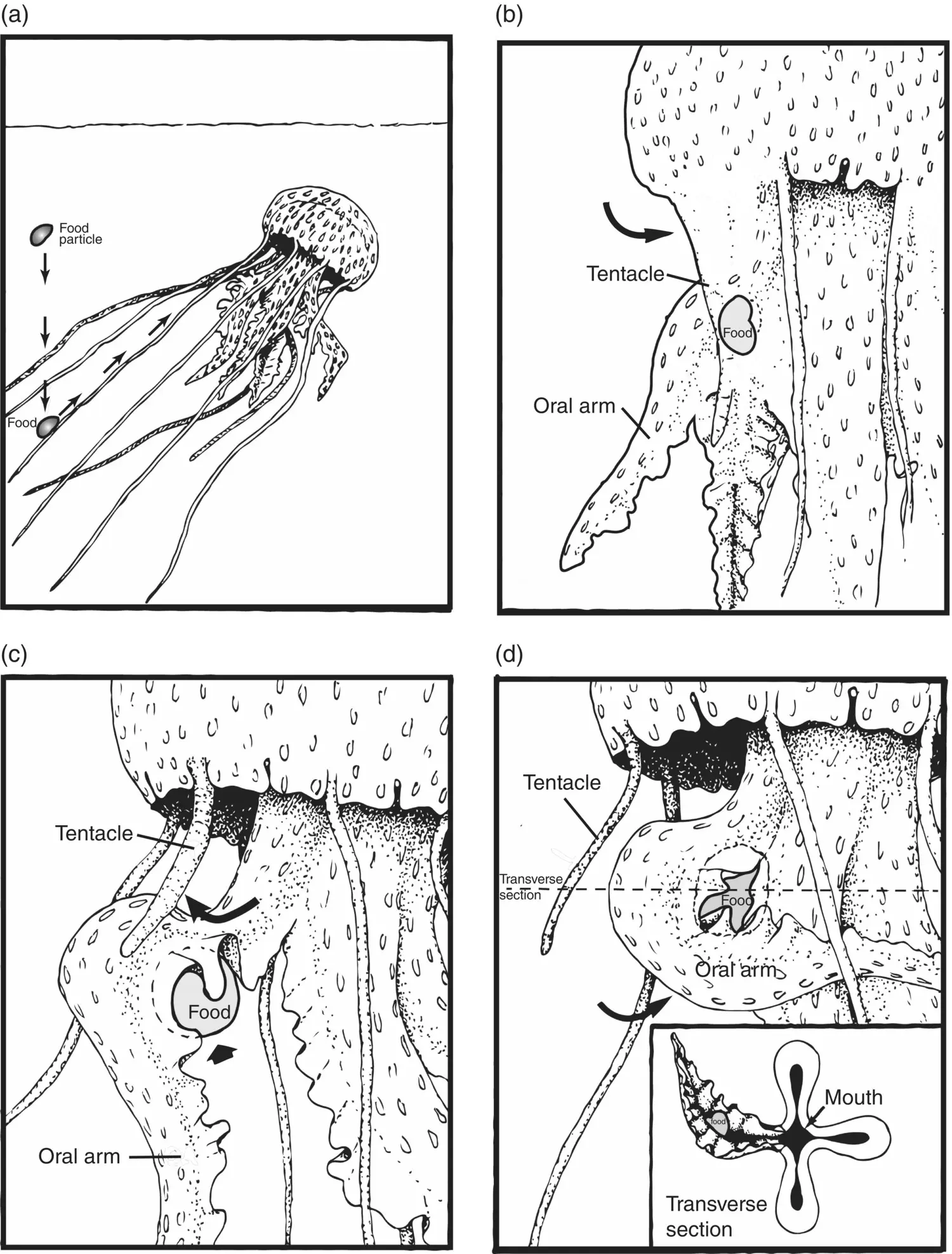
Figure 3.16 Feeding behavior of Pelagia noctiluca on motile prey. (a) When the prey touches a marginal tentacle, there is an immediate nematocyst discharge, followed by a tentacle contraction after 2–3 seconds; (b) the stiff tentacle bends toward the nearest oral arm, at the same time the oral arm moves upward, turns slightly, and draws its endodermic layer near the food; (c) the stiff tentacle releases the prey and moves upward, going away from the oral arm; (d) the oral arm grasps the prey completely and starts the peristaltic and mucous movements, which drive the food to the oral arm groove, to the manubrium, and finally to the gastric cavity. The inset figure is a transverse section of “d.”
Source: Rottini‐Sandrini and Avian (1989), figure 1 (p. 52). Reprinted by permission from Springer Nature Customer Service Centre GmbH Springer‐Verlag, Marine Biology, Feeding mechanism of Pelagia noctiluca (Scyphozoa: Semaeostomeae), Rottini‐Sandrini and Avian, 1989.
Table 3.1 Tentacular encounter zones and deployment patterns, tentacle length, volume, and density, and prey types of some medusae and siphonophores.
Source: Adapted from Madin (1988), table 2 (p. 423).
| Species | Encounter zone – shape of space | Tentacle deployment a pattern (see Figure 3.17) | Encounter zone – volume (cm 3) | Tentacular length (m) | Tentacular volume (cm 3) | Tentacle density b (ppm) | Prey types |
|---|---|---|---|---|---|---|---|
| Medusae | |||||||
| Calycopsis typa | Disc | 3.17A | 850 | 12 | 0.0942 | 110.20 | Large prey – types unknown |
| Stomotoca pterophylla | Sphere | 3.17B | 900 000 | 2.4 | 0.0033 | 0.00 | Medusae, other gelatinous spp. |
| Aequorea macrodactyla | Cone | 3.17C | 1 500 000 | 200 | 0.7697 | 0.53 | Salps, ctenophores, pteropods, forams, medusae |
| Laodicea undulata | Disc | 3.17C | 175 | 18 | 0.0088 | 50.00 | Small crustacea, larval fish |
| Dichotomia cannoides | Cone | 3.17C | 50 | 7.5 | 0.0019 | 36.80 | Small crustacea types unknown |
| Liriope tetraphylla | Sphere | 3.17B | 220 000 | 3 | 0.0052 | 0.02 | Heteropods, appendicularia, larval crustacea, juvenile fish |
| Solmundella bitentaculata | Cylinder | 3.17B | 2 | 0.1 | 0.0118 | 5000.00 | Gelatinous species |
| Aeginopsis laurentii | Cone | 3.17D | 100 | 0.2 | 0.0471 | 476.20 | No data |
| Somaris spp. | Cone | 3.17D | 2 | 0.3 | 0.0001 | 40.00 | Small motile species, types unknown |
| Pelagia noctiluca | Cone | 3.17C | 8 700 000 | 24 | 0.1794 | 0.21 | Salps, ostracods, ctenophores, polychaetes, copepods, fish |
| Siphonophores | |||||||
| Sulculeolaria spp. | Cylinder | 3.17E,F | 257 000 | 243.2 | 1.0400 | 4.10 | Copepods |
| Forskalia spp. | Cylinder | 3.17E | 434 000 | 88.2 | 0.2400 | 0.56 | Copepods, amphipods, chaetognaths, molluscs, fish, fish eggs |
a See Figure 3.17for cross‐reference to arrangement patterns of deployed tentacles.
b The calculated space within the encounter zone occupied by tentacles
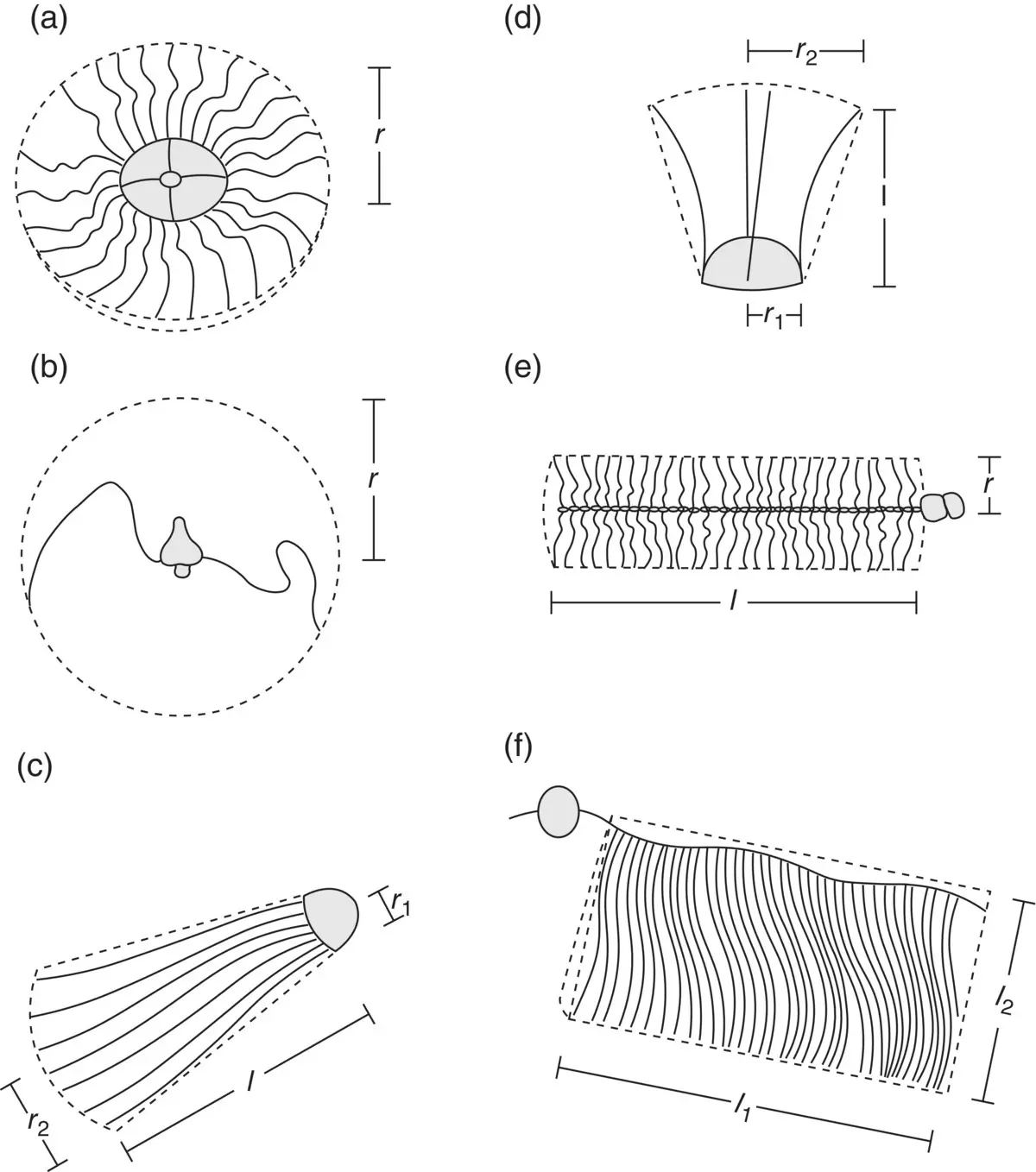
Figure 3.17 Patterns of tentacle deployment seen in medusae, siphonophores, and ctenophores. (a) Tentacles radiate from the body, filling a disk‐shaped space; (b) tentacles are somewhere within a sphere around the body; (c) tentacles stream behind the body, filling a truncated cone; (d) tentacles are held ahead of the body in a cylinder or truncated cone; (e) tentacles radiate from a long stem, filling a cylindrical space; (f) tentacles or tentilla form a nearly flat curtain. Some siphonophores may have encounter zones of this shape.
Source: Madin (1988), figure 1 (p. 416). Reproduced with the permission of the Bulletin of Marine Science.
Leptomedusae
Aequorea macrodactyla ( Figure 3.17c) are large, lens‐shaped, medusae that swim nearly continuously, trailing the tentacles behind the bell to form a conical volume. Tentacles extend to about 50 times the bell diameter. Prey stick to the tentacles of the swimming medusa and are conveyed to the mouth. Like Stomotoca , the prey of Aequorea are largely gelatinous and include medusae, ctenophores, pteropods, and salps.
Laodicea undulata have a flat shape with large numbers of fine tentacles arranged radially around the bell, giving it an encounter volume like that shown in Figure 3.17a. It is believed to feed largely on small prey such as copepods.
Dichotomia cannoides has a conical bell with about 50 tentacles arranged around the bell margin. Its tentacles are deployed in a disc ( Figure 3.17a) or cone ( Figure 3.17c) configuration. It is believed to feed on small prey.
Trachymedusae
Liriope tetraphylla has four tentacles that extend as much as 25 times the bell diameter and an unusually long gastric peduncle with a stomach at the end. Its hunting strategy is most like Stomotoca ( Figure 3.17b), with a large spherical encounter volume and the tentacles only occupying a small fraction of it.
Читать дальшеИнтервал:
Закладка:
Похожие книги на «Life in the Open Ocean»
Представляем Вашему вниманию похожие книги на «Life in the Open Ocean» списком для выбора. Мы отобрали схожую по названию и смыслу литературу в надежде предоставить читателям больше вариантов отыскать новые, интересные, ещё непрочитанные произведения.
Обсуждение, отзывы о книге «Life in the Open Ocean» и просто собственные мнения читателей. Оставьте ваши комментарии, напишите, что Вы думаете о произведении, его смысле или главных героях. Укажите что конкретно понравилось, а что нет, и почему Вы так считаете.


